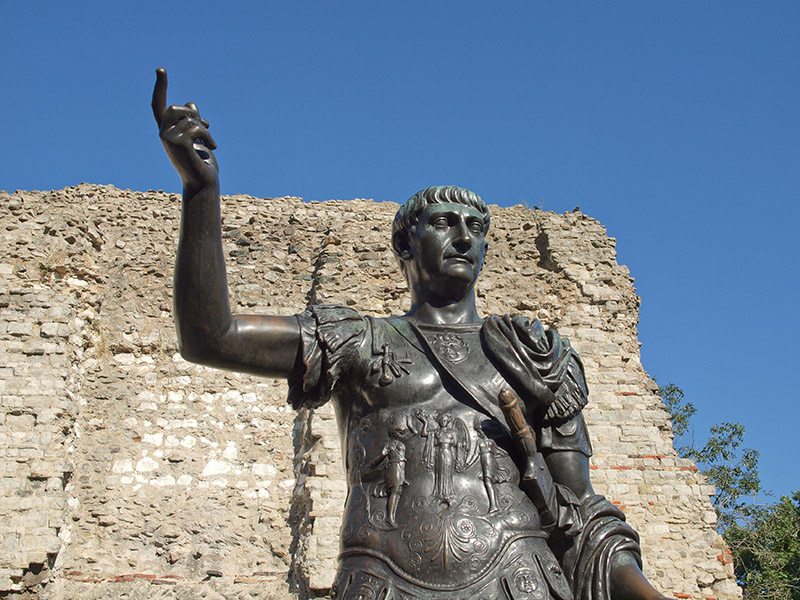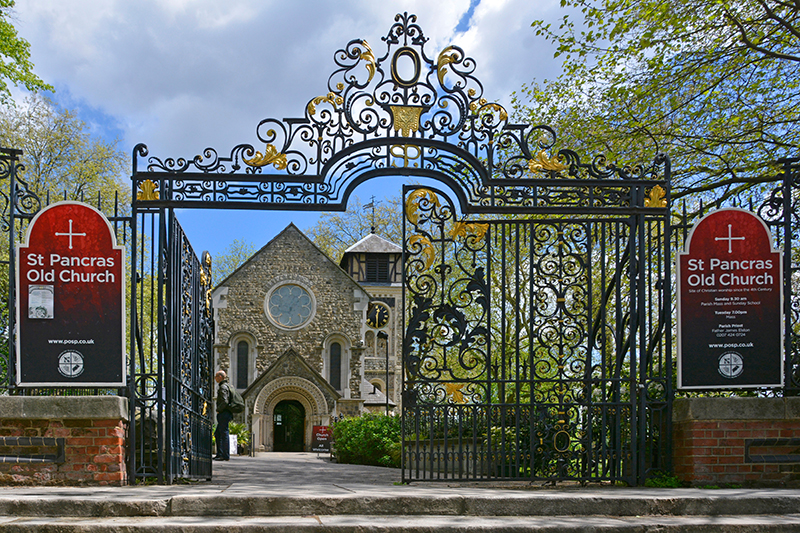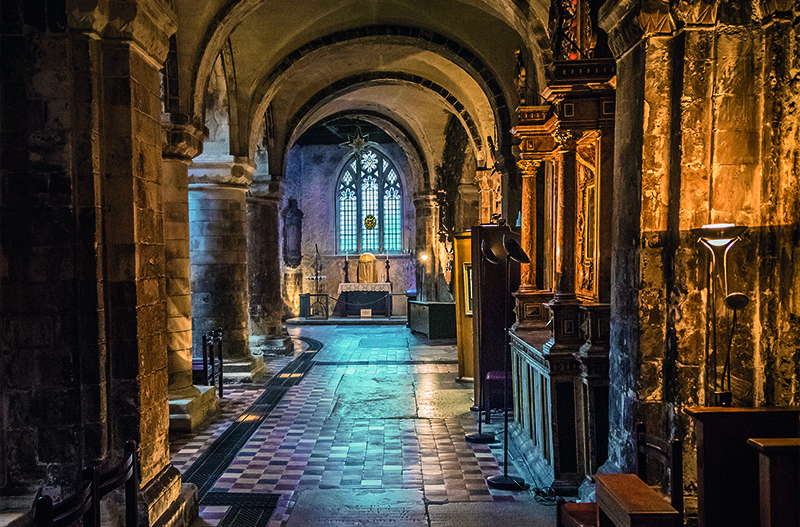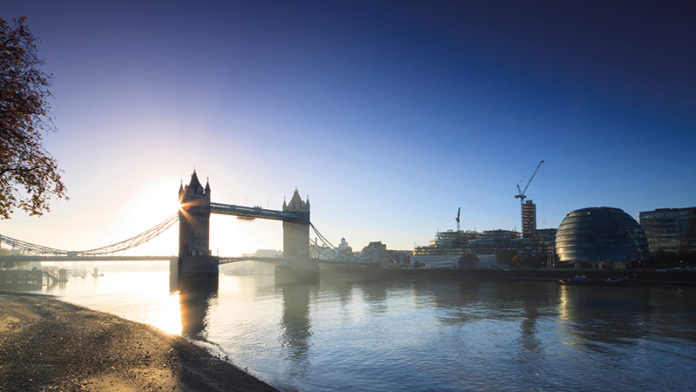London is one of the great cities of the modern world, but it is built on ancient foundations. Here, we go in search of its origins
There is a school of thought that considers the city-state to be the enduring form of human civilisation. Standing on the shores of the River Thames on Bankside, looking back towards St Paul’s and the City of London across the water, it’s hard to disagree.
Yet, before the city itself, there was the river. While modern London traces its roots back to the Roman conquest of Britain in AD 43, the easy-to-defend banks of the winding Thames had already been occupied for many millenia by people who would have worshipped the river as a divine being; before, and even after, the Romans arrived, native Britons would throw their treasures into the water as offerings to appease the gods – many are no doubt still lurking in its depths waiting to be rediscovered. In 1857, one of the most significant pieces of Celtic art found in Britain, dating from 350-50 BC, was dredged from the Thames during the building of Chelsea Bridge. Today, the Battersea Shield is one of the highlights of London’s British Museum (www.britishmuseum.org).

When the Romans founded Londinium in AD 50, they did something that must have dazzled the area’s existing residents: they built a river crossing. This wooden bridge, a few hundred yards downstream from its modern namesake, was the first of many incarnations of London Bridge. Majestic and magical as it must have seemed to have tamed the river, the bridge, like some of its successors, was prone to collapse – we can but marvel at how far back the singing of the nursery rhyme “London Bridge is Falling Down” might stretch.
Soon London was a thriving centre of commerce located where the City of London – still a global financial hub – stands today. The ruins of this first major settlement have been gradually rediscovered as the city constantly reimagines itself. In 1954, a 2nd-century AD Roman Temple of Mithras was unearthed near Mansion House, the home and office of the Lord Mayor of London.
Although currently unceremoniously dumped in a car park, a new development plans to restore the temple to its original site, where it will go on public display. London’s only Roman amphitheatre, built around AD 75, was found under Guildhall Art Gallery in 1988. Today you can explore the bloody and barbaric history of this important site – where 7,000 spectators would have sat to watch animal fights and executions – on a free tour (www.guildhall.cityoflondon.gov.uk).
Perhaps most importantly, the Romans also built a wall around our city. Refortified in the medieval era, large parts of London Wall and its gates (the names of which – Ludgate, Newgate, Cripplegate, Bishopsgate and Aldgate – linger on) stood until 1760, but the route is still largely navigable and makes a fascinating walk. Parts of the wall can still be seen, with the most impressive 13th-century remains immediately north of the Tower of London, right in the heart of Tower Hill.
Other fascinating ruins can also be found near the Museum of London, Barbican. Inside, the museum tells the story of the city and is packed with artefacts, including Roman treasures (www.museumoflondon.org.uk/museum-london).

History teaches us that, when the Romans abandoned Londinium in the 5th century, the city fell into decline. Yet under Saxon dominance in the following centuries, it remained the principal seat of British kings and continued to enjoy independence as a city state. But it would be the coming of Christianity in the Middle Ages that would establish many of the principal sites we still know today. In 604, Ethelbert of Kent erected the first cathedral church of St Paul’s, the first of five religious buildings on the site culminating in Sir Christopher Wren’s 17th-century masterpiece, an icon of the capital’s skyline (www.stpauls.co.uk).
Other London churches can also claim such ancient lineage too. St Pancras Old Church (www.sosstpancras.org), near King’s Cross, the first incarnation of which may been constructed as early as AD 314, is one of the oldest sites of Christian worship in England, and possibly Europe. Perhaps the second oldest church, supposedly first constructed during the 6th century, St Bride’s Church in Fleet Street (www.stbrides.com), was built on the site of an ancient temple dedicated to the Celtic goddess of fertility, Brigit, and Roman foundations can be explored in its medieval crypt.
During the 7th century, the Saxon town of Lundenwic grew around a marketplace outside the city walls – on the site where Covent Garden market still stands – and seems to have thrived, despite political strife. The Vikings invaded frequently from 830, looting and burning the city, until Alfred the Great managed to re-establish Anglo-Saxon control in 886 following years of siege. The new king renewed fortifications and the city became known as Lundenburh.
Although the Danish King Canute took control of London – and, indeed, all of England – in 1016, it would be his stepson, Edward the Confessor, who would have the biggest impact on the city’s architecture, and the buildings he inspired are among the oldest still visible. He commissioned the original Westminster Abbey, the first Norman Romanesque church in England, which was consecrated in 1065, on the site of an earlier 8th-century Saxon church known as the West Minster (St Paul’s, by contrast, was the East Minster). Although the present building mainly dates from the 13th century, in the cloisters the Pyx chamber and the Undercroft still remain from Edward’s church (www.westminster-abbey.org).
Edward also built a palace opposite the abbey. Very little is known about this early Westminster palace, but its location remains invested with an enduring authority, which some believe dates back even further to a Roman temple to Apollo on the site (www.parliament.uk).

Edward’s death in 1066 led to a succession crisis, which resulted in William the Conqueror’s defeat of King Harold II at Hastings, but it was to London the Norman would to go to be crowned king of England at Westminster Abbey on Christmas Day. And, in order to ensure support from the start, William reconfirmed the rights of City of London citizens granted under Edward the Confessor. Preserved in the Guildhall archive, the William Charter is written in Old English on a small piece of vellum and remains the basis of many City of London privileges.
William also constructed towers to defend against invasion, in particular, the White Tower at Tower of London (www.hrp.org.uk). Built in 1078, it was the largest non-religious building in the country; part palace, treasury and stronghold, it was designed as much to invoke fear and awe in Londoners as invaders. And it was William the Conqueror’s son, William Rufus, King William II, who began Westminster Hall in 1097 – now the oldest building on the Parliamentary estate – to impress his subjects with his power and majesty.
Another of the most important remnants of Norman architecture in London is at the now rather humble-looking parish church of St Bartholomew the Great, founded in 1123 as an Augustinian priory at West Smithfield, where the chancel of this once-large building now survives. A wing of this original church was dedicated to the care of the sick: St Bartholomew’s Hospital has existed on the same site ever since, surviving everything from the Great Fire of London in 1666 to the Blitz during the Second World War. The hospital is the oldest in Britain and, despite being a modern working hospital, houses a permanent exhibition (www.bartshealth.nhs.uk/bartsmuseum) detailing its long and fascinating history.
The Guildhall – still the ceremonial and administrative heart of the City of London – was constructed in 1411 and the oldest part of the building, the Great Hall, with its cathedral-like, 7-metre-high ceilings, sits atop the largest medieval crypts in use in London. The Great Hall is believed to be on a site of an earlier Guildhall (the name possibly derives from Anglo-Saxon “gild”, meaning “payment”) profoundly attesting to the endurance of industry and administration on the site.
The wielding of power by money, monarchy or religion has always been at the heart of London. Yet while those who call power their own have come and gone, the city itself has endured and thrived.






 © 2024
© 2024